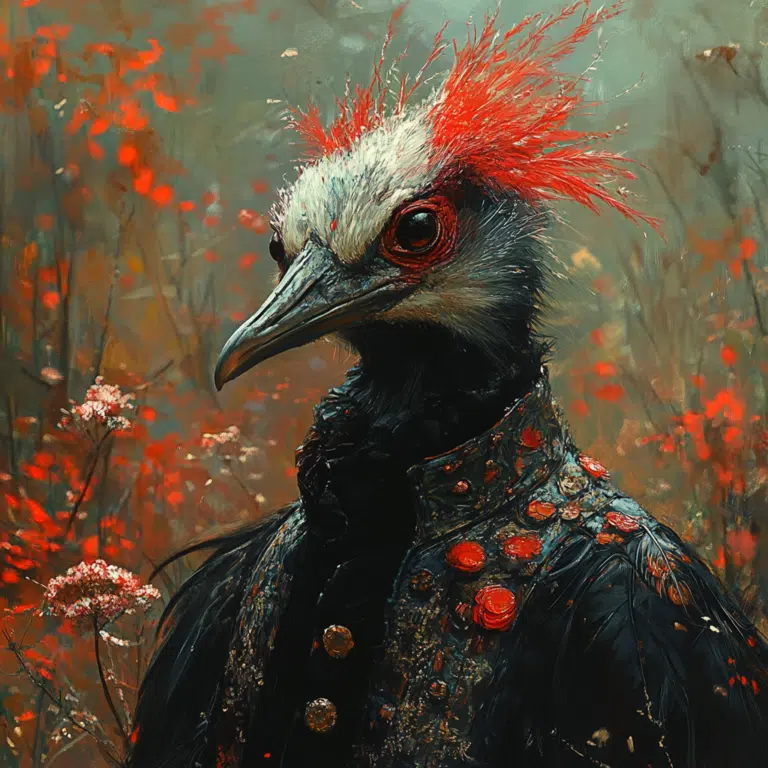The subject of the most aggressive dog breeds is one that sparks impassioned debates. The intention here isn’t to cast any shadow over our beloved canine companions. Instead, it’s about factual understanding. Let’s delve into the top 7 most aggressive dog breeds, their characteristics, and some real-world tales that paint a fuller picture.
Top 7 Most Aggressive Dog Breeds: Characteristics and Real-World Examples
1. Pit Bull Terrier
Origins and History: Originally bred in the 19th century, Pit Bull Terriers were intended for bull-baiting before transitioning into loyal family pets. Their historical roots are as complex as they are controversial.
Unique Traits: These dogs have a muscular build and exude determination and loyalty. While they can display aggressive behaviors, they’re also known for intense affection toward their families.
Case Study: Take Hulk, the largest Pit Bull in the world. Owned by Marlon and Lisa Grennan from Dark Dynasty K9s, Hulk showcases the breed’s extremes in size, loyalty, and yes, unfortunately, the aggression often associated with their power.
2. Rottweiler
Origins and History: Rottweilers descend from drover dogs of Roman times and have a heritage of herding and guarding responsibilities.
Unique Traits: With a solid frame and a bite force that can intimidate, they’re as protective as they come. Loyalty and strong protective instincts define them.
Case Study: Cesar Millan, the famous ‘Dog Whisperer,’ has rehabilitated numerous problematic Rottweilers, demonstrating that while they can be aggressive, proper training can make a world of difference.
3. German Shepherd
Origins and History: Initially bred in Germany for herding sheep, German Shepherds quickly found roles in military and police forces worldwide.
Unique Traits: Known for their intelligence, agility, and territorial nature, these dogs excel in various protective roles.
Case Study: Cairo, the heroic German Shepherd involved in the Navy SEALs mission that eliminated Osama bin Laden, exemplifies their impressive capabilities and fierce loyalty.
4. Doberman Pinscher
Origins and History: Created by Louis Dobermann in the late 19th century, these dogs were meant for protection.
Unique Traits: Sleek and fast, Dobermans are courageous and loyal. They strike a balance between fearlessness and affectionate loyalty to their owners.
Case Study: In competitive protection sports, Dobermans shine. Notably, the film “The Doberman Gang” highlighted their agility and intelligence, establishing a public image of the breed’s daunting prowess.
5. Akita
Origins and History: The Akita originates from Japan, where they were used in hunting large game like bears and boars with prowess.
Unique Traits: Powerful and loyal, Akitas can be aloof towards strangers but are generally affectionate to their families.
Case Study: Hachiko, the Akita famed for nine years of loyal waiting at Shibuya Station for his deceased owner, stands as an unwavering testament to the breed’s faithfulness.
6. American Bulldog
Origins and History: Developed in the southern United States, American Bulldogs were bred for utility tasks such as hunting and farm work.
Unique Traits: Muscular and protective, they are loyal companions. However, their appearance often leads to misunderstood aggression.
Case Study: Joanna Mary Piersanti has tirelessly worked in the rescue and rehabilitation of aggressive bulldogs, showcasing their transformative potential with the right care.
7. Cane Corso
Origins and History: This Italian breed has roots as property guards and large game hunters since Roman times.
Unique Traits: Cane Corsos possess an imposing size with strong protective instincts and are highly athletic.
Case Study: Dog trainers like Ed Frawley from Leerburg Dog Training advocate specific training methodologies that cater to the Cane Corso’s distinctive needs and capabilities.
Traits that Influence Aggressive Behavior Across Breeds
Genetics: Selective breeding has often emphasized traits such as guarding or fighting, which play a massive role in potential aggression.
Health Conditions: Health problems, including thyroid disorders and neurological issues, can exacerbate aggressive behaviors.
Socialization: Early socialization, exposing dogs to various environments, people, and other animals, is crucial in mitigating natural aggression.
| Breed | Key Characteristics | Typical Behavior | Recommended Owner Experience |
| American Pit Bull Terrier | Strong, muscular, and highly energetic | Can be aggressive with strangers; loyal to family | Experienced, firm, and consistent |
| Rottweiler | Powerful, protective, and confident | Protective; can be aggressive if not socialized | Experienced and confident |
| German Shepherd | Intelligent, versatile, and loyal | Protective; can be aggressive under perceived threats | Experienced and active |
| Doberman Pinscher | Alert, fearless, and obedient | Strong protective instincts; can be aggressive | Confident and experienced |
| Bullmastiff | Strong, protective, and reliable | Guarding instinct; can be aggressive if threatened | Experienced with large breeds |
| Husky | Energetic, independent, and intelligent | Can be strong-willed and aggressive if not properly trained | Active and firm |
| Chow Chow | Aloof, independent, and dignified | Territorial; can be aggressive toward strangers | Experienced with firm training |
| Dalmatian | Energetic, intelligent, and protective | Can be aggressive if not properly exercised | Active and consistent |
| Jack Russell Terrier | Energetic, intelligent, and tenacious | High prey drive; can be aggressive towards small animals | Active and experienced |
| Akita | Dignified, courageous, and loyal | Territorial and protective; can be aggressive | Experienced with firm training |
Insights from Veterinary Experts and Dog Trainers
Dr. Sophia Yin, DVM: A forerunner in stressing the connection between physical health and behavior, Dr. Yin’s work emphasizes comprehensive health assessments to address aggression.
Ian Dunbar, PhD: A renowned veterinary behaviorist, Dunbar champions positive reinforcement methods over aversive techniques to manage and reduce aggression in dogs.
Debunking Myths Surrounding Aggressive Dog Breeds
Dangerous Dog Breed Myths: The stereotype that certain breeds are inherently dangerous is often misleading. Breed DNA plays a part, but individual behavior varies significantly based on upbringing and training.
Role of Media Representation: Media often skews public perception, sensationalizing attacks and stigmatizing breeds like the Pit Bull Terrier or the Rottweiler unjustly, which adds to their misunderstood reputation.
Strategies for Managing and Training Aggressive Dogs
Training Techniques: Utilize consistent, clear commands and positive reinforcement. It’s crucial for owners to establish themselves as leaders.
Role of Socialization: Balanced socialization from an early age can mitigate aggressive tendencies, making dogs more adaptable and secure.
Professional Intervention: When facing severe aggression, seeking help from professional trainers or behaviorists is a prudent step. Experts like Nat Kelly cole have been instrumental in transforming aggressive dogs.
Reflecting on the Role of Breed-Specific Legislation (BSL)
Effectiveness and Controversy: BSL aims to reduce dog attacks by banning certain breeds, but its effectiveness is hotly debated.
Alternatives to BSL: More viable approaches include promoting responsible ownership and implementing comprehensive community education programs on dog behavior and safety.
Dog breeds are not monoliths, and aggression isn’t bound solely by genetic predisposition. It is the intricate dance of upbringing, environment, and training that truly shapes canine behavior. By understanding the most aggressive dog breeds and their intricacies, we foster a more informed and compassionate perspective that promotes safer, happier coexistence with our furry friends.
Most Aggressive Dog Breeds Traits and Facts
When it comes to identifying the most aggressive dog breeds, it’s essential to understand their diverse traits and stories. Many think of dogs like Pit Bulls or Rottweilers as inherently aggressive, but there’s more to the story. Let’s dive into what really characterizes these breeds, peppered with some intriguing trivia and context along the way.
Pit Bulls and Rottweilers
Pit Bulls and Rottweilers are often spotlighted when discussing aggressive breeds. Despite their reputation, these dogs can be loving, loyal companions if trained well. Interestingly, Rottweilers’ protective instincts stem from their historical roles as herders. This link to protecting livestock has stayed with them. Fun fact: Pit Bulls were once known as “nanny dogs” due to their gentle disposition with children. Much like how you might not expect a john wayne young from a comic book character to have a tender side, these dogs often surprise people.
German Shepherds and Doberman Pinschers
German Shepherds, another breed commonly mentioned as aggressive, are selected often for police and military work. Their intelligence and trainability make them extraordinary working dogs. On the other hand, Doberman Pinschers were originally bred to be guard dogs. While their appearances may be imposing, experienced owners know they are incredibly loyal and loving. Just as there’s more to carrot one piece than meets the eye, there’s more to these breeds than their tough exterior.
Lesser-Known Aggressive Breeds
While the more common aggressive breeds get a lot of focus, there are also lesser-known breeds worth mentioning, like the Chow Chow. This fluffy dog might look adorable but can be quite territorial. Similarly, the Dalmatian, made famous by Hollywood, is known for its energetic and sometimes nippy behavior. If you’re curious about more unexpected aggressive breeds, think of the varied selections you might find at places like mt Vernon marketplace or morgan street food hall – always full of surprises.
Fun Facts and Final Thoughts
Part of understanding dog aggression is recognizing their backgrounds. Knowing, for example, that certain breeds were bred for protection or herding can give insight into their behavior. Training and socialization play a colossal role, much like how selecting the right fly rod for fishing can drastically change your experience. Understanding these nuances allows for better integration of these breeds into our homes. Similarly, understanding the broader legal context, akin to browsing through rocket law, can also help when managing an aggressive breed.
In sum, unpacking the most aggressive dog breeds goes beyond just their rumors. With proper training and love, even the most fearsome-looking dogs can become your best friend.






























